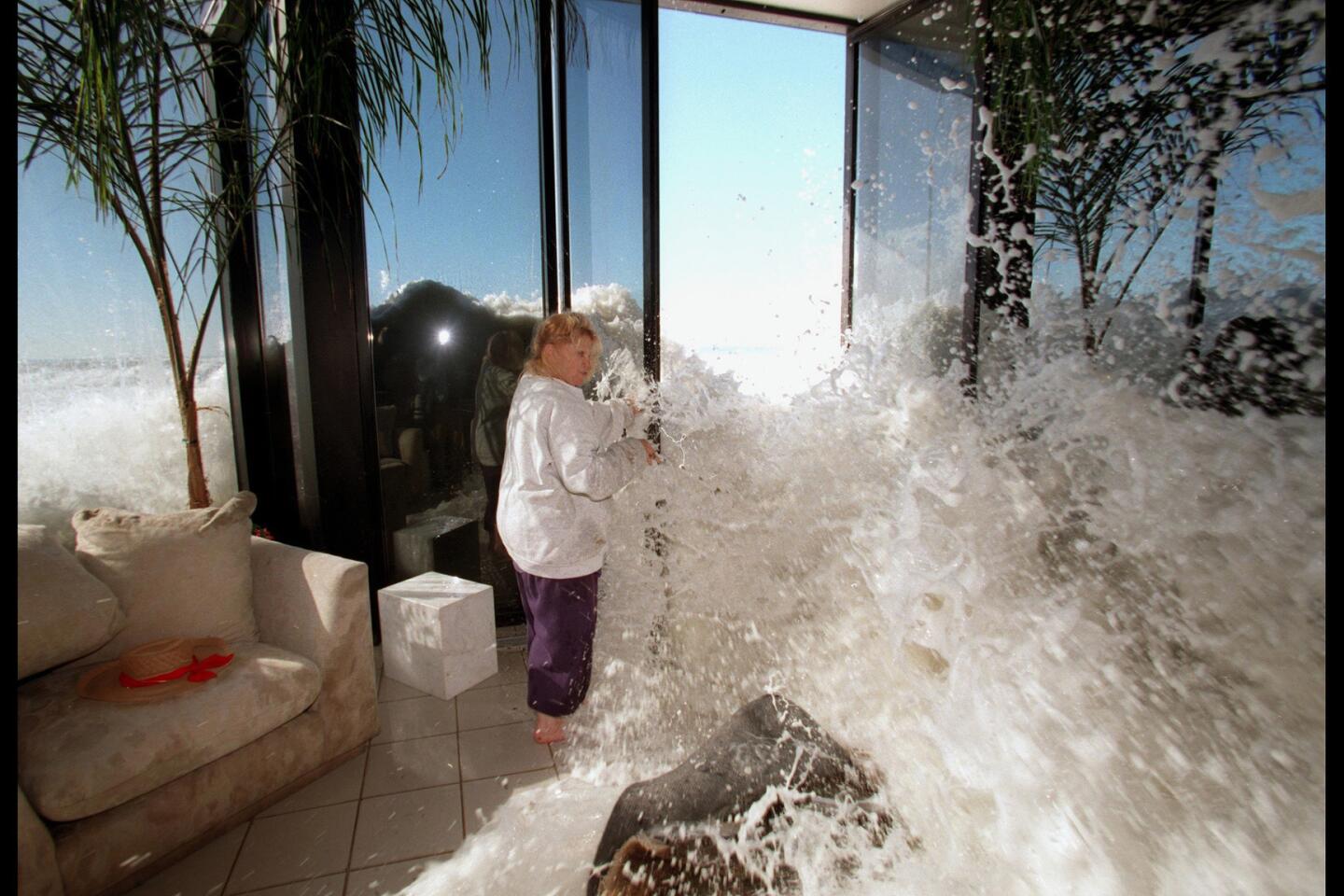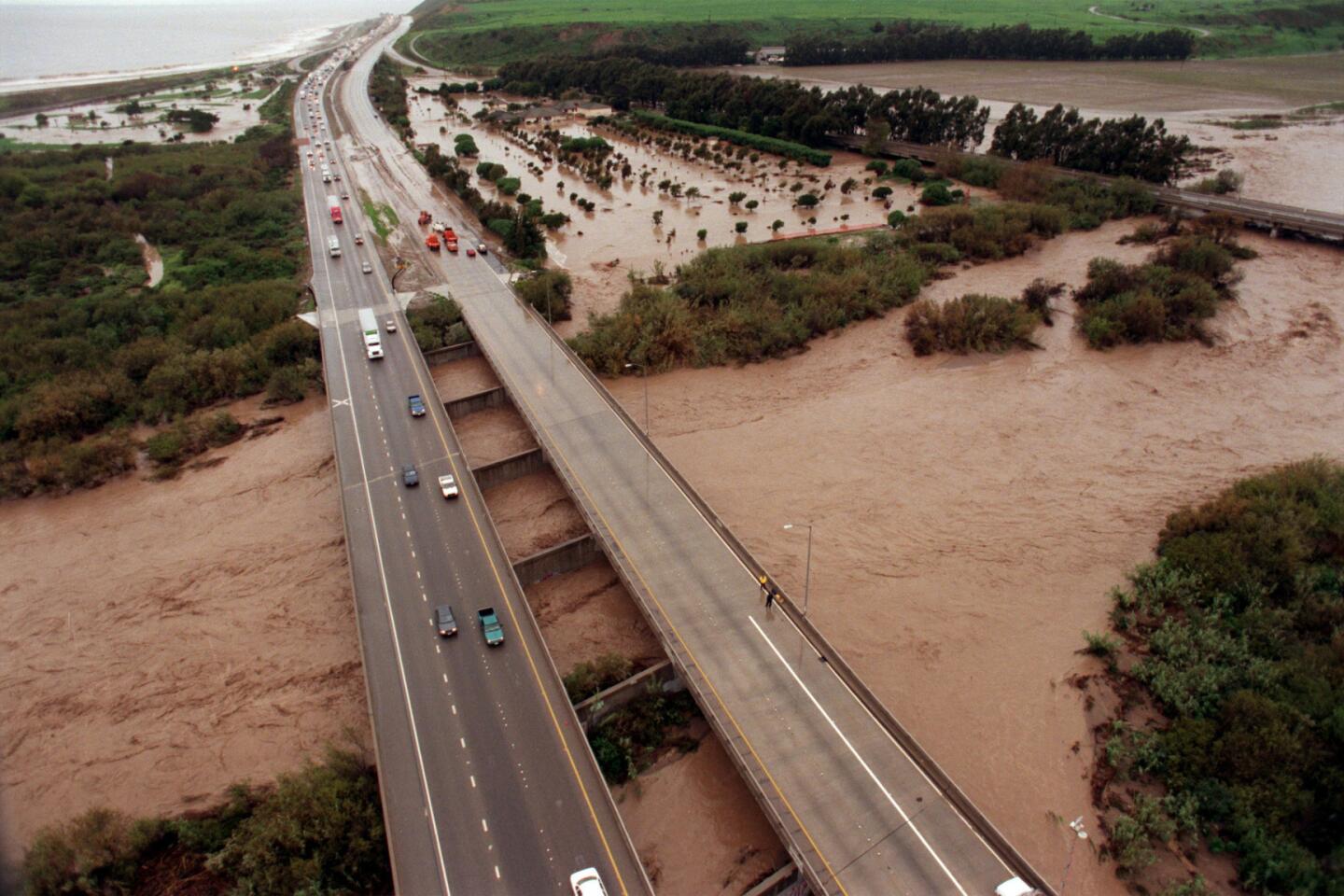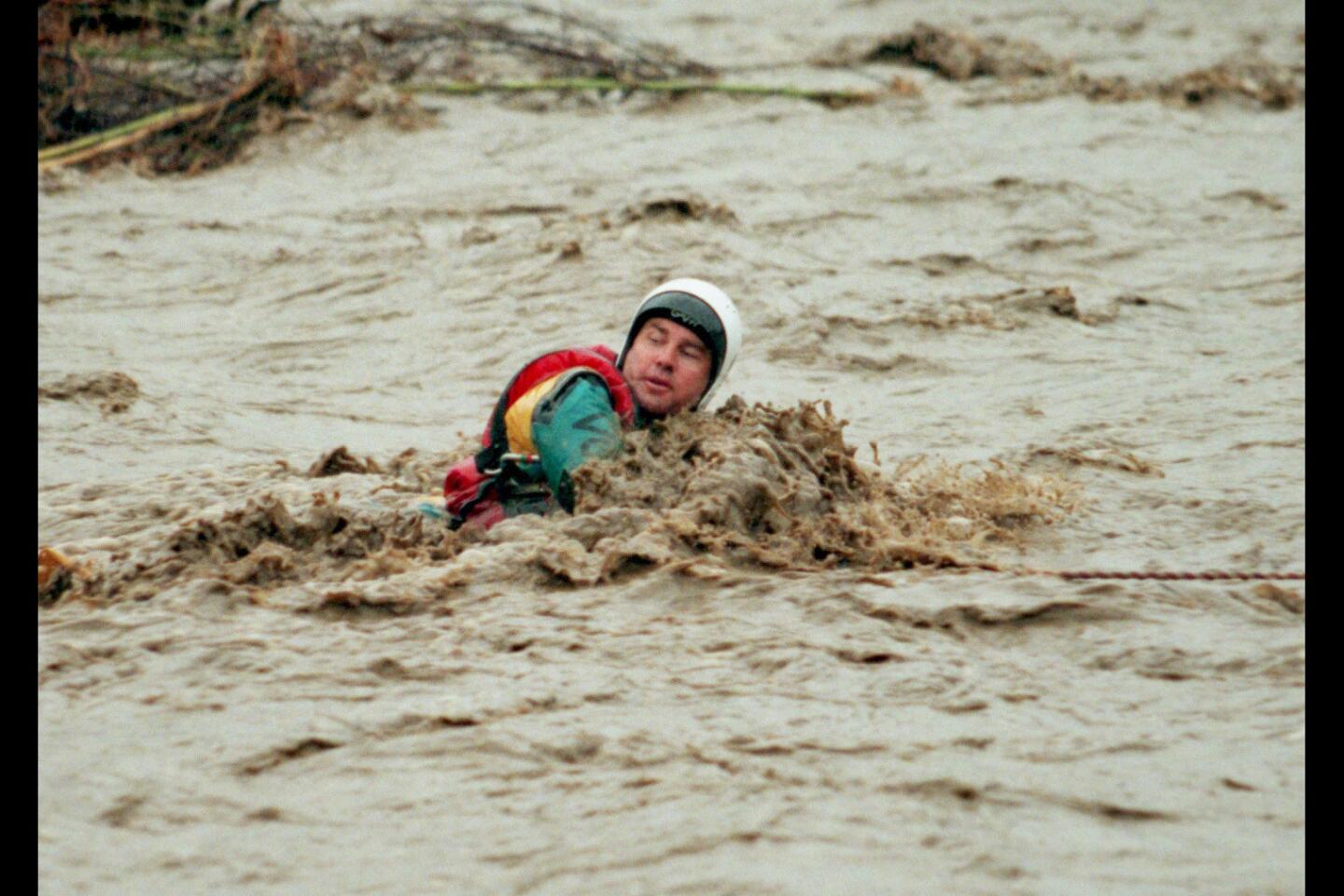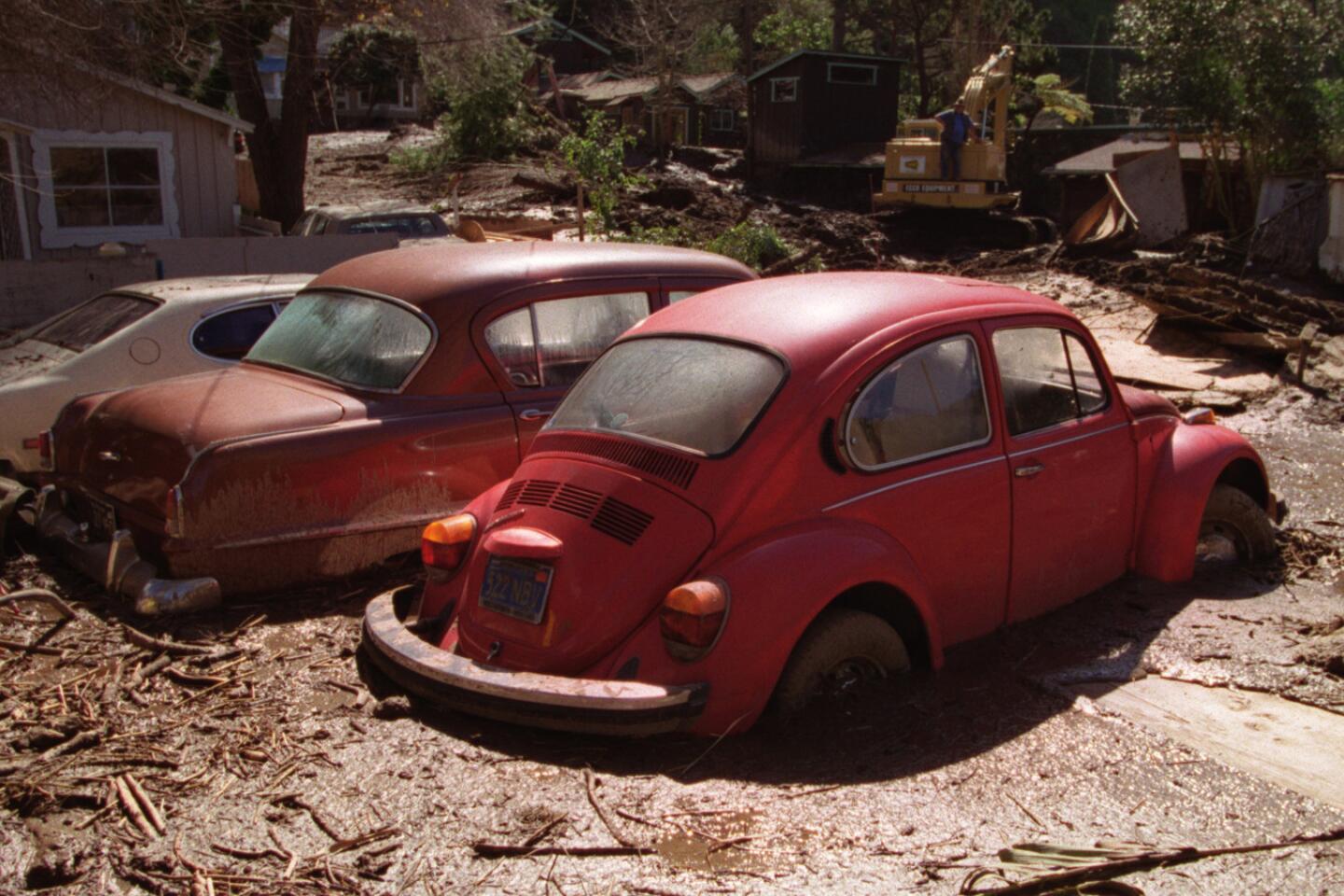How to prepare for a destructive El Niño winter
- Share via
So with more signs of a strong El Niño winter, what can people do to prepare for the possibility of heavy rain?
That's the question many people are asking in the wake of a new forecast this week. The National Weather Service's Climate Prediction Center said Thursday that this El Niño is shaping up to be as strong as the 1997-98 El Niño, which sent storms that killed 17 people and caused more than $550 million in damage in California.
How are local officials preparing for El Niño?
Many agencies are doing their own El Niño planning. Supervisors Michael D. Antonovich and Hilda Solis will ask for a full investigation into the county's preparedness at all county flood-control facilities.
Los Angeles County Flood Control District officials said they have cleared debris basins and flood-control channels throughout the county — the first line of defense against mudslides — and made some improvements to dams and other infrastructure since the county's last major rainstorms in 2004-05.
Is there a specific area of concern?
Devil's Gate Dam in Pasadena. (Robert Gauthier / Los Angeles Times)
At Devil's Gate Dam in Pasadena, debris that accumulated as a result of the Station fire has put neighborhoods downstream along the Arroyo Seco in danger of flooding.
Los Angeles County plans to remove 2.4 million cubic yards from the Hahamongna flood-control basin above Devil's Gate Dam over the next five years. Some neighbors, outdoor recreation enthusiasts and environmentalists who oppose the project are suing to stop it.
But the sediment removal project will not start until next year. The county has not yet awarded a contract for the work, said Keith Lilley, who oversees a group of county Department of Public Works staff who respond to storm events.
There is risk of flooding south of the dam — affecting the 110 Freeway, Pasadena, South Pasadena and northeast Los Angeles — if the San Gabriel Mountains are soaked with a series of unrelenting storms and send large amounts of mud, rocks and burned trees into a full basin, officials said.
“If we had multiple major storms with sediment, the reservoirs would fill up and we would have very little capacity for flood control and water capture,” Lilley said.
A 2011 county report painted a grim picture of what would occur if huge rainstorms hit Devil's Gate. Under a worst-case scenario, torrential rains could send mud, rocks and water over the dam and flooding into the Rose Bowl, South Pasadena and northeast Los Angeles in less than 40 minutes.
A subsequent report said the Rose Bowl probably wouldn't be flooded in a single storm but could be at greater risk after a series of storms if sediment isn't quickly removed from areas downstream from the dam.
Are there some basic tips about how to prepare for possible flooding?
Yes. Here is an illustrated guide from Santa Barbara County.
And here are some key points from the city of Los Angeles:
- Check your property, clearing all private drains and rain gutters and disposing of all trash and yard clippings/trimmings in your city-issued containers.
- If you have a rain barrel, check to make sure the downspouts are clear of debris and the connection is working properly. Be sure to remove the overflow drain cover.
- Cover toxic materials with tight-fitting lids and/or store them indoors and clean up any automotive leaks or spills.
- If possible, conduct your own mini cleanup by picking up trash in your neighborhood.
- Stay away from downed power lines and electrical wires. Report downed electrical lines to the Department of Water and Power.
Here are some tips from the Federal Emergency Management Agency
Before the rains:
- If you don’t have a flood insurance policy, contact your insurance agent today. If you have purchased a policy, review your policy with your agent and ask questions to make sure you have the proper amount of coverage.
- Keep your flood insurance policy and insurance agent’s contact information on hand in the event you need to file a claim.
- Copy important documents (mortgage papers, deed, passport, bank information, etc.). Keep copies in your home and store originals in a secure place outside the home, such as a bank safe-deposit box.
- Take photos of your possessions (furniture, antiques and collectibles, musical instruments, electronic equipment, etc.). Store copies with your other important documents.
- Save receipts for expensive household items (appliances, electronic equipment, etc.) as proof of original cost.
- Make an itemized list of other possessions, such as clothing, books and small kitchen appliances. The more comprehensive your list, the better.
During the rains:
- Don’t walk through a flooded area. Just 6 inches of moving water can knock you off your feet.
- Don’t drive through a flooded area. A car can be carried away by just 2 feet of water.
- Keep away from downed power lines and any other electrical wires.
- Animals that lost their homes during a flood may seek shelter in your home and aggressively defend themselves.
After the rains:
- Check for structural damage before entering your home. If you suspect damage to water, gas, electric or sewer lines, contact authorities.
- Remove wet contents like carpeting, furniture and bedding immediately but keep swatches for the adjuster. Mold can develop within 24 to 48 hours. Use dehumidifiers and air conditioners to dry out the building.
- Photograph and list all damaged or lost items including their age and value where possible. Take photos of water in the house. Adjusters need evidence of the damage to prepare your estimate.
- Plan before you repair. Contact your local building inspections, planning office or clerk’s office to get information on local building requirements.
How bad was the 1997-98 El Niño?
It started in October 1997 in Mexico, when a hurricane fueled by El Niño slammed into Acapulco, causing massive flooding and hundreds of deaths.
A few weeks later, storms started hitting Southern California. Then in December, the skies opened up in Orange County in what meteorologists described as the biggest rainstorm in a century. More than seven inches fell in parts of south Orange County in one day. Mobile-home parks in Huntington Beach flooded, forcing rescuers to use inflatable boats and a catamaran to rescue residents. Mudslides destroyed hillside homes. Neighborhoods flooded. Major roads were made impassable by debris.
And that was just the beginning. Over the next few months, a series of powerful storms caused havoc, washing away roads and railroad tracks, overflowing flood control channels, causing 17 deaths and more than half a billion dollars in damage in California. The toll was far worse in Mexico, where Tijuana and other cities faced crippling flooding.
MORE ON EL NINO:
Sign up for Essential California
The most important California stories and recommendations in your inbox every morning.
You may occasionally receive promotional content from the Los Angeles Times.



















